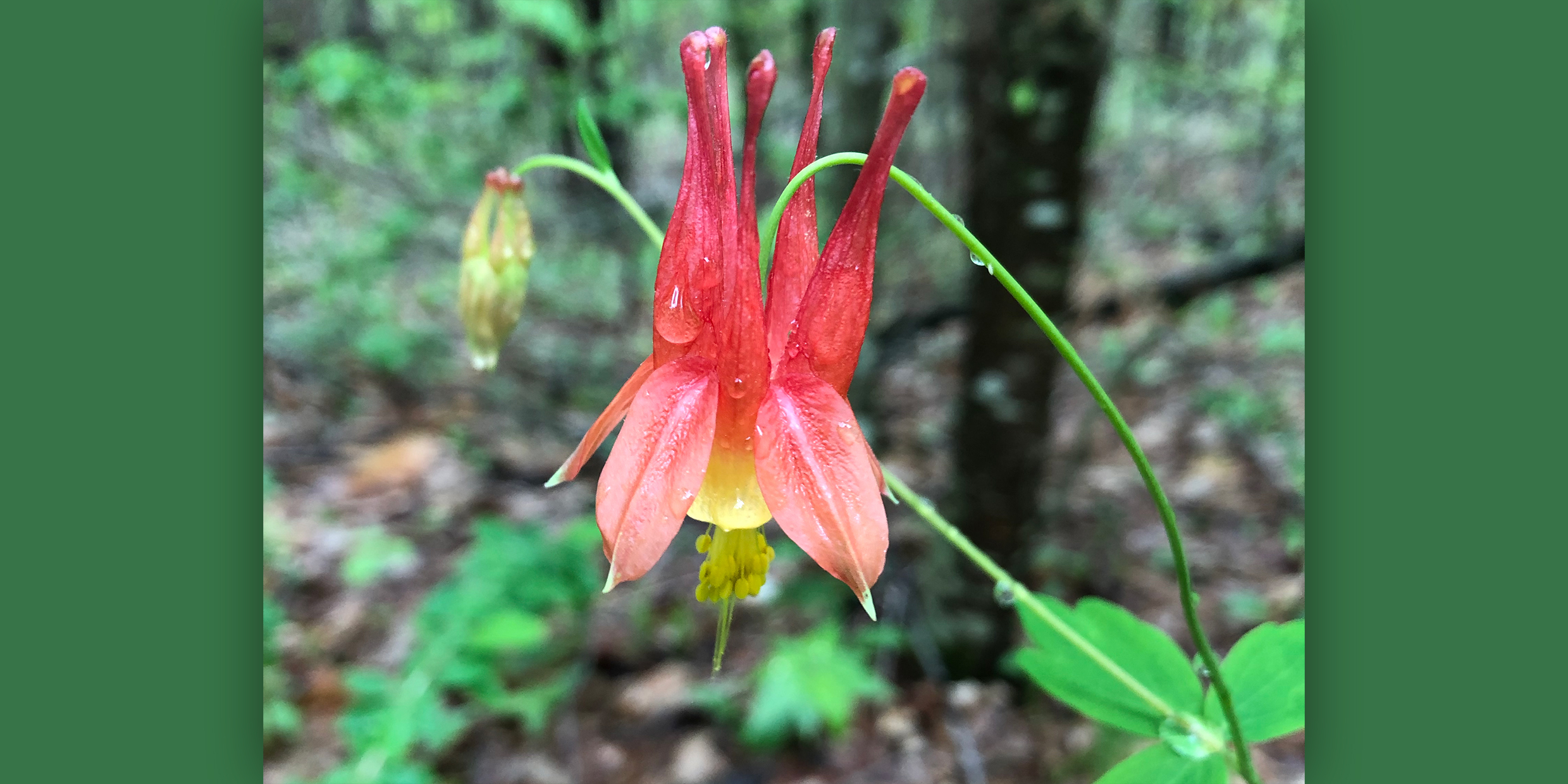Originally published 9 May 1994
It is a condition of the enjoyable that we have neither too much sameness nor too much chaos in our lives.
The former is boring. The latter is unsettling. Our happiness requires a balance of the familiar and the unexpected.
For 30 years I have walked the same path each day to and from work. The path takes me through woods and meadows, beside a marsh, across a stream, through cultivated fields, along roadside verges. Each spring I meet familiar friends: Canada mayflowers, lady’s slippers, wood anemones, starflowers. They greet me in their masses, in familiar places. Their welcome is one of long acquaintance.
Once, some years ago, on a rocky outcrop near the path in the deep woods, I encountered a wild columbine, a single plant where none had grown before: crimson five-part nodding blossoms, with trailing spurs, designed, it seems, for long-tongued visitors, hummingbirds perhaps. The color of the blossoms, too, suggests an evolutionary attachment to hummingbirds, which, it has been said, delight in any color at all as long as it’s red.
It was the only wild columbine I have encountered during my walks, totally unexpected, and — for that — altogether enjoyable.
Just over 100 years ago, Mrs. William Starr Dana (née Frances Theodora Smith) published the first popular guidebook to our native wildflowers. Of the columbine she wrote: “There is a daring loveliness which stamps it on the memories of even those who are not ordinarily minute observers.” I am not a particularly close observer of wild plants, yet the unexpected loveliness of the solitary columbine made it unforgettable.
A day later it was gone. Had it been plucked by a passerby? Mrs. Dana spoke of the “destructive tendencies, which are strong within most of us,” as the columbine’s enemy. No flower loses more by being removed from its surroundings, she observed. The rock, the moss, the dappled sunlight are part of the flower’s charm. She understood that we are part of a web: the woody outcrop, the flower, the human observer. Each has its separate integrity; each depends upon the other.
Even as Mrs. Dana wrote, woodlands and fields were being rapidly destroyed by real estate developers, swamps drained for agricultural purposes, and forests clear-cut and pulped. At a 1900 meeting of the American Association for the Advancement of Science, William Trelease, director of the Missouri Botanic Garden, urgently advocated “the protection and preservation in every possible way of our native and natural vegetation.”
The first meetings of what would later become the New England Wild Flower Society were convened in Boston that same year, under the name of the Society for the Protection of Native Plants. Nearly a century and several name changes later, the organization’s efforts to preserve our endangered flora continue.
The society is perhaps best known for its Garden in the Woods, a 45-acre botanical paradise in Framingham. At this time of the year, especially, there can be few more beautiful places on the planet. It is an eye-popping showcase for our native plants.
But there is more. The society conducts horticultural research, preserves habitats and sponsors an extensive botanical education program geared to people of all ages. It administers the New England Plant Conservation Program, an alliance of more than 60 conservation organizations from all the New England states, uniting their efforts to prevent the extinction and promote the recovery of our region’s imperiled flora.
All of these activities have a common goal: preserving diversity. If Mrs. Dana was worried about threats to our flora a century ago, she would be aghast today. The unchecked cancer of development that continues to threaten the last remaining habitats of some native plants. In New England, more than 300 species of plants are rare or endangered.
The goal of the New England Wildflower Society is to rescue and recover all of our threatened flora by the year 2000 — the centennial year of the society — by collecting, banking and growing seeds for education, research and protective cultivation. The alternative is a precipitous decline in plant diversity.
We tend to think of extinctions only in terms of distant rain forests, but the preservation of biodiversity is also an issue in our own back yards. As Mrs. Dana said in her essay on the columbine, the destructive tendencies are strong within us.
In the Language of Flowers, popular in Victorian times, the columbine represented “folly,” because of its resemblance to a jester’s cap and bells. The folly is that we might let many of our native plants disappear from the environment.
The wild columbine is not immediately endangered; I am told that in some places it is common, and easily propagated from seed. Nevertheless, in my neck of the woods I have seen but the one plant, and that’s rarity enough for me.
Among masses of common spring plants, a single delicate wild flower provided the essential balance of the familiar and the unexpected. Without the work of organizations such as the New England Wild Flower Society, the day is not far off when the familiar becomes the unexpected, and the unexpected becomes extinct.
What then will be the source of our enjoyment?
The New England Wild Flower Society is now known as the Native Plant Trust, and remains committed to protecting and conserving New England’s native plants. ‑Ed.



